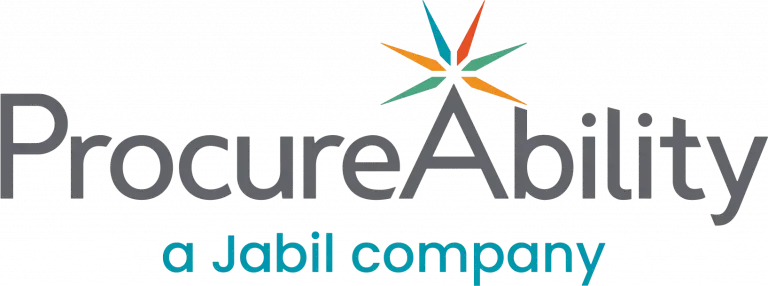Combating the Pressures That Inflate Procurement Turnover

Read the full article in Supply & Demand Chain Executive and below:
Receiving an employee’s two-weeks’ notice can spur feelings of anxiety and concerns for the continuity of your operations. Employee turnover leaves a gaping hole in your talent and operations. That individual is taking with them their skills and tacit knowledge about your company’s procedures and goals. It will take weeks to find another skilled candidate and onboard them. And then it will take months or years before they perform at the previous employee’s level. When this happens more than occasionally, you’re in even more trouble. High turnover rates lead to increased recruitment costs, loss of knowledge, and decreases in organizational efficiency, financial performance, and strategic continuity.
On average, U.S. businesses lose nearly one in every four employees over the course of a year—a slow leak that feels more like a big blowout. While supply chain professionals in general report high career satisfaction levels, recent pressures are leading to burnout for procurement professionals. At the top of the supply chain process, these professionals are the critical link that acquires the materials, goods, and services for the next stage of operations. When a procurement professional leaves, supplier relationships are disrupted, rogue spend increases, and there is instability within the procurement team.
On top of these disruptions, replacing a worker generally costs a business a third of the employee’s annual salary—an amount that can vary widely based on employee level and seniority—according to Employee Benefits News. Given these disruptions and costs, stemming employee turnover should be a top priority for all businesses.
A root-causes analysis of procurement turnover
To combat turnover, employers must first understand the reasons why employees leave. Here are five trends we’re seeing among procurement employees, across almost every industry:
- Increased workloads and resource constraints: A significant majority (86 percent) of procurement professionals reported an uptick in workload over the past year, with more than half (55 percent) experiencing elevated levels of stress or burnout. This surge is attributed to the need to manage supply chain disruptions, inflationary pressures, and other economic challenges.
- Inflation and cost-cutting pressures: With 91 percent of supply chains affected by inflation, procurement teams are under intense pressure to reduce costs. This relentless focus on cost-cutting contributes significantly to stress and burnout among professionals in the field.
- Manual processes and lack of automation: Many procurement professionals are frustrated with outdated, manual processes that increase workload and stress. The absence of automation and efficient systems exacerbates these challenges, leading to higher burnout rates.
- High-pressure environment and lack of support: Procurement professionals often operate in high-pressure environments with tight deadlines and elevated expectations. A lack of recognition, support, and work-life balance can exacerbate burnout, leading to reduced morale and diminished job satisfaction among team members.
- Lack of career development opportunities: Procurement professionals are career-oriented and value future career growth. When organizations fail to support employees in achieving their career objectives, it can lead to dissatisfaction and increased turnover.
Procurement professionals are also subject to many of the same employment dissatisfactions that affect other professionals. These include dissatisfaction with compensation, a negative workplace culture, inflexible work schedules, stifled innovation, and weak management.
7 solutions that foster employee satisfaction
Retaining talent and mitigating turnover requires being or becoming an employer of choice. Creating a work environment where employees want to be will give them reasons to stay. Make sure you offer an equitable relationship with your employees in which they receive as much as they give.
Here are seven strategies for satisfying employees and preventing turnover:
- Offer flexible work schedules: This year for the first time, work-life balance overtook compensation as the chief motivator for staff. About 75 percent of gen Z respondents ranked work-life balance as a priority over compensation. Flexible work schedules that allow employees time to take care of their needs and desires outside of work lead to increased job satisfaction. Hybrid models that balance remote and on-site work can give employees flexibility while maintaining team cohesion and ensuring operational efficiency.
- Leveraging technology: Enable employees to work smarter, not harder, by leveraging automation tools and supply chain management software to reduce repetitive tasks and give professionals time to spend on more engaging, fulfilling challenges.
- Prioritize employee wellness: Healthy, happy employees work better, are more satisfied with their work, and help promote a positive work environment for others. Fitness programs, mental health support, and similar programs can help employees feel and be their best.
- Give employees a clear career path: When employees can envision a long-term future for themselves within an organization, with clear opportunities for career-level growth and professional development, employees are more likely to stay with their employer and continue offering their knowledge and experience to their teams.
- Set the tone with positive leadership and communication: Professionals want leaders who are transparent, empathetic, and collaborative. Leaders should foster trust and loyalty through open communication, consistent and relevant feedback, formal and informal accolades, and honest conversations about expectations and changes.
- Provide competitive compensation: Make sure you compensate your employees fairly and at or above market rates. Also be sure to increase salaries with inflation to retain talent. Competitive benefits packages, including health insurance, dental insurance, vision insurance, disability insurance, life insurance, paid parental leave, and more also can be differentiators.
- Support a positive work environment: All employees should feel comfortable at work. Foster an environment that is supportive and inclusive and allows all employees to feel valued and recognized. Mentorship programs and team-building exercises can support camaraderie and increase feelings of value as well. Company branding also plays into a positive workplace culture. Professionals are drawn to organizations that align with their values. A company’s actions, values, and involvement in the greater community can make the difference between a status quo employer and an employer employees can be proud of.
Patching the turnover leak
As procurement teams face mounting pressures from increased workloads, economic challenges, outdated processes, and a high-stress environment, it’s essential for organizations to recognize and address the root causes of turnover.
By implementing strategies such as the ones above, organizations can create a workplace that attracts and retains top procurement talent. Investing in these retention strategies is not just beneficial for the well-being of employees, but it also is vital for the long-term success and stability of the procurement function within the company. An airtight talent-retention plan will prevent any talent leaks and keep procurement operations rolling.
Read the full article in Supply & Demand Chain Executive.
About Kim Neisen
Kim Neisen is an industry expert with over 25 years of proven experience in talent acquisition, managed services, and procurement. Kim has an extensive history of driving innovation and enhancements that elevate operational effectiveness, employee engagement, and client satisfaction. Kim believes in leading by example and finding innovative ways to provide value to clients, candidates, and her peers.
Prior to working at ProcureAbility, Kim led the global, enterprise-wide Professional Services MSP under Global Spend Management at Aon Corporation, where she earned the Outstanding Buyer of the Year award from the Chicago Minority Supplier Development Council.
About ProcureAbility
ProcureAbility, a Jabil company, is the leading provider of procurement services, offering advisory, managed services, digital, staffing, and recruiting solutions. For nearly 30 years, we have focused exclusively on helping clients elevate their procurement function.
We combine leading methodologies, analytics, market intelligence, and industry benchmarks with our uniquely flexible and customizable service delivery model. Global organizations of all sizes trust ProcureAbility to transform their procurement operations, drive growth, and reimagine what’s possible.
Let ProcureAbility help you reimagine your procurement capabilities.
Media contact:
Kathleen M. Pomento
Chief Marketing Officer | ProcureAbility
kpomento@procureability.com



